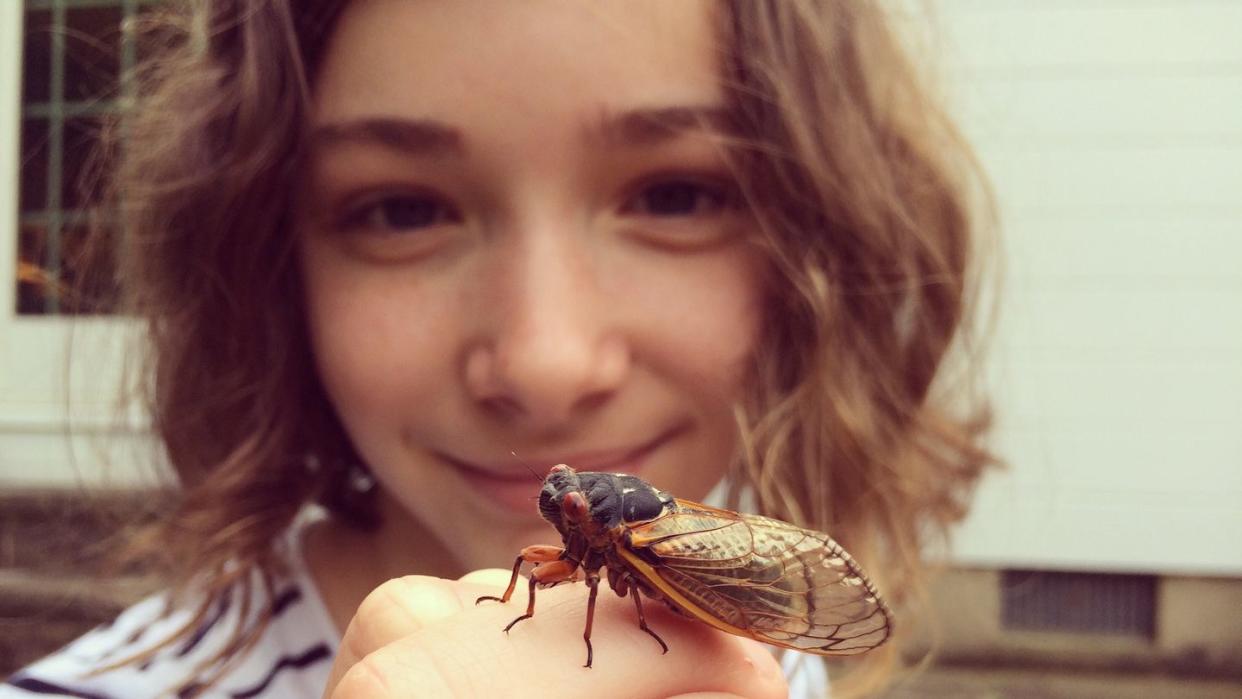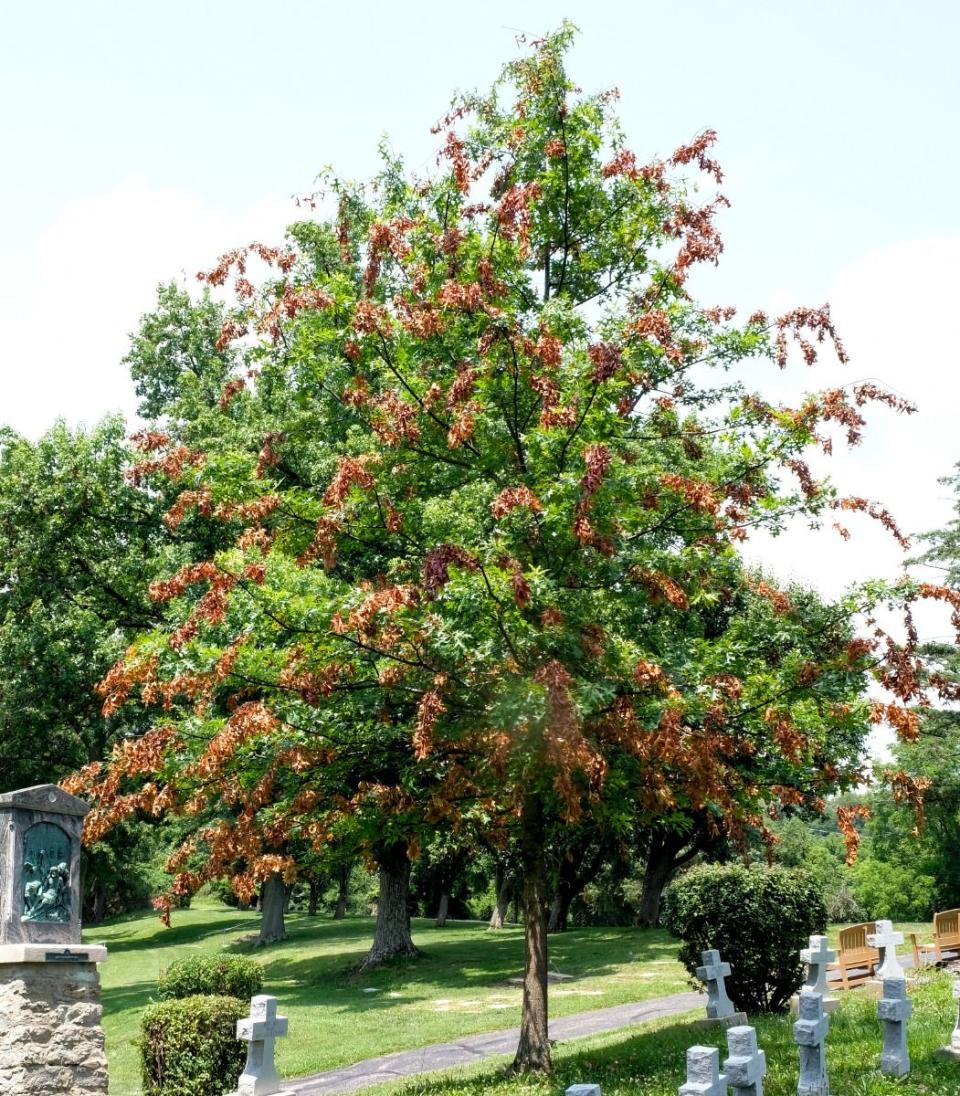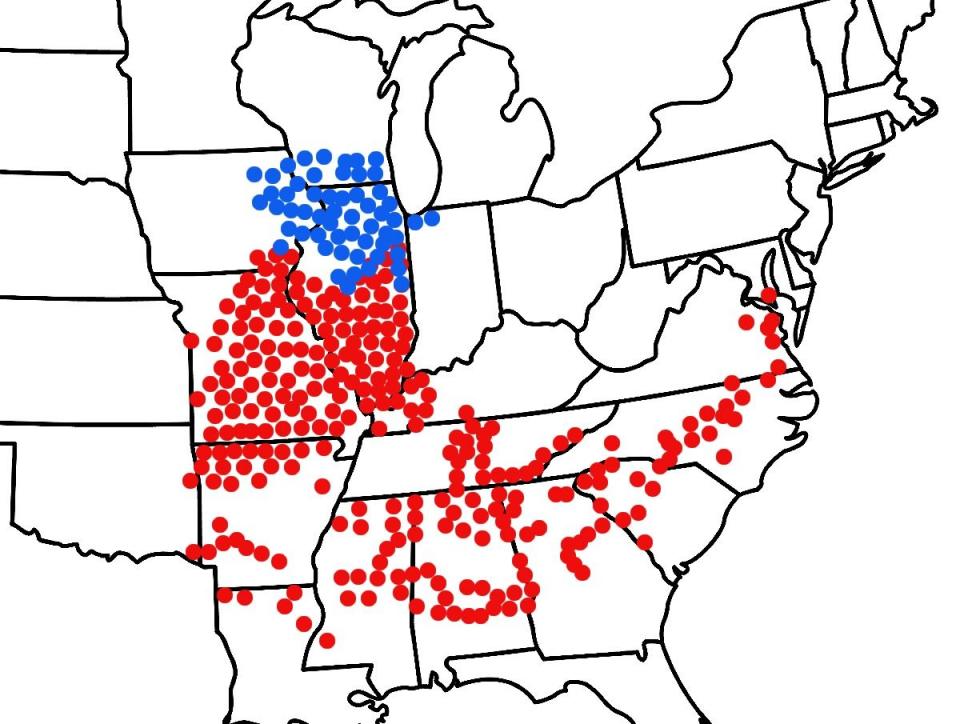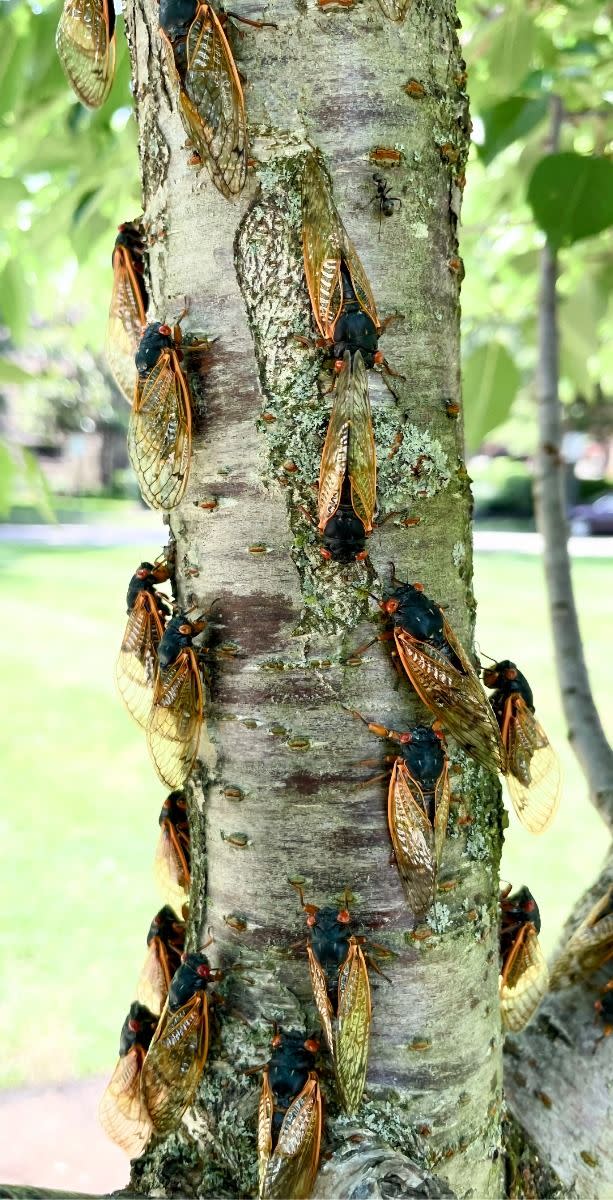This Year’s Double Brood of Cicadas Is Beginning to Emerge, Even If the Chorus Hasn’t Started

Unless you’ve been hanging out under a rock (or, say, living underground for your entire pre-adult life), you have probably heard: The cicadas are coming! And it’s a big year for these fascinating insects.
In spring 2024, a double brood of periodical cicadas will emerge from the ground, molt, and take to the trees to serenade areas in 17 states across the Southeast and Midwest. Meanwhile, the local birds will have quite the feast.
The two broods emerging this year are the 13-year Brood XIX cicadas in the Southeast (considered the largest brood of them all) and the 17-year Brood XIII in the Midwest.
[table-of-contents] stripped
Several features make this double brood noteworthy. For one, the two broods are adjacent. Most times when 13- and 17-year cicadas co-emerge, every 5 or 6 years, the two broods have some distance between them, according to the University of Connecticut’s site dedicated to periodical cicadas. An adjacency like this one happens about once a quarter-century.
— Chris Simon, PhD
Another fun fact: The last time these two specific broods (XIX and XIII) emerged together, it was 1803 and Thomas Jefferson was president. In some places, this historic event is already kicking off, even if the chorus hasn’t started yet. After all, it takes a few days for newly emerged nymphs to molt and reach full maturity so that the pre-mating song can begin.

What states will see periodical cicadas in 2024?
Brood XIX will emerge in Alabama, Arkansas, Georgia, Illinois, Indiana, Iowa, Kentucky, Louisiana, Mississippi, Missouri, North Carolina, Oklahoma, South Carolina, Tennessee, and Virginia.
Brood XIII will emerge in Illinois, Indiana, Iowa, and Wisconsin, as well as a minuscule portion of the southwestern corner of Michigan.
Coverage will vary greatly from state to state.

Within state lines, some areas of Indiana and Iowa will see either Brood XIX or Brood XIII, but there will be no overlap of broods in either state.
Illinois is the only state where there’s potential for broods XIX and XIII to intermingle.
What month do cicadas come out?
Cicadas typically appear in early to mid-April or May in the south and a bit later (May or June) in the colder parts of the country. The timing all comes down to soil temperature. Cicada nymphs begin to emerge when the temperature about 7 to 8 inches below the Earth’s surface warms up to around 64°F (about 18°C). In some places, the emergence has already begun!
“The periodical cicadas from Brood XIX have started to emerge,” Eric Benson, PhD, Professor Emeritus and Extension Entomologist at Clemson University, reported from South Carolina. “In 2011 our first recorded periodical cicada emergence was on April 11 in the Augusta, Georgia/South Carolina area. They emerged again in the same area on April 11, 2024! That is amazing to me!”
Sightings are also popping up in other areas, according to maps on iNaturalist or Cicada Safari, both free apps where everyday citizens can help scientists track this year’s double brood emergence state-by-state. You can document your observations on the free apps iNaturalist and Cicada Safari. The latter was created by entomologist Gene Kritsky, PhD, along with the Center for IT Engagement at Mount St. Joseph University in Cincinnati.
If you do record observations on the apps, improve the quality of your data by commenting on the abundance of the cicadas too, whether you see one or two—or the trees around you are covered in them. That’s something that most people submitting their photos do not do, says Chris Simon, PhD, senior research scientist at the University of Connecticut.

Pro tip for parents: Cicada Safari’s website also has free cicada activities for kids.
Society’s footprint above ground will also affect how many periodical cicadas people see in states where the broods are expected. Developments and the clear-cutting of trees kill periodical cicada nymphs underground that depend on the tree roots for food, Benson said.
So, if the branches of every tree where you live become heavy with chorusing cicadas this late spring and early summer, slow down and stand in awe of nature. The phenomenon of periodical cicadas with synchronized broods of 13- and 17-year lifecycles is found only in eastern North America.
“(It is) one of the wonders of the world,” says Simon. “This will be an event to remember if you are lucky enough to have them in your neighborhood!”
You Might Also Like

